Bird Watching Guide for Beginners
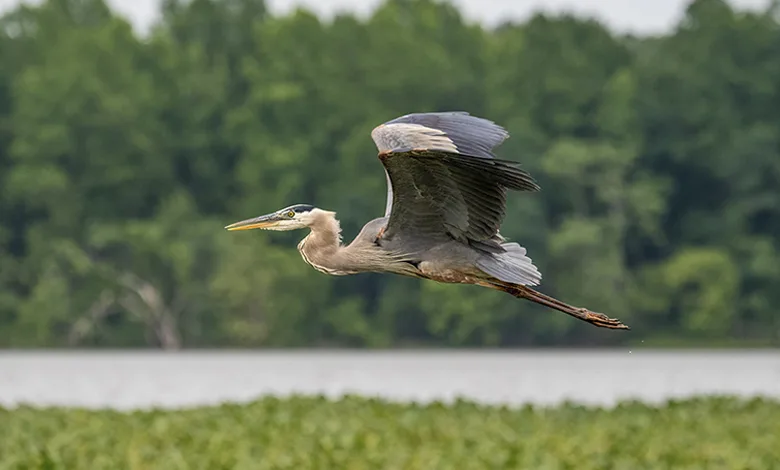
Nothing says the Chesapeake Bay to me like the Great Blue Heron (GBH). Some consider this wading bird boring, but they are my spark bird. The GBH jump started my interest in birding. Do you have a spark bird? It doesn’t need to be a fancy bird, but maybe one of our feathered friends intrigued you to leap into birding.
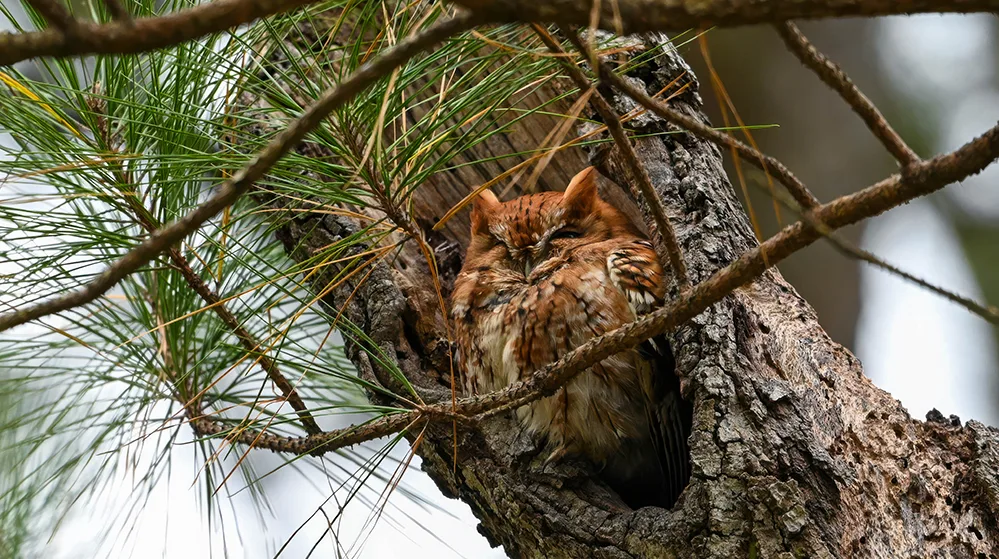
Birding benefits
Birding continues to explode due to its many physical and mental health benefits. Immersion in nature improves my well-being by making me aware of my surroundings, and learning about birds and their habits stimulates the mind. It is an excellent hobby for friends and family of all ages to enjoy together.
The birding community is welcoming and helpful. A good birder will always help you identify an unknown species or where to spot a bird. Blackwater National Wildlife Refuge, one of my favorite birding spots, has two Eastern Screech Owls, affectionately known as Rusty and Dusty. During a particular visit, onlookers gathered near Rusty’s favorite tree. I asked a fellow birder about the more elusive Dusty’s whereabouts, and they kindly pointed us in Dusty’s direction.
Tips for getting started with bird watching
Birding’s accessibility opens this hobby to everyone. If watching woodpeckers feed from your kitchen window brings you the most joy, that’s still birding! The tips below will help guide you on your bird-watching journey.
Be patient
Curiosity and patience are keys to bird watching, regardless of your skill level, whether it is Herons or Bald Eagles. However, spotting and identifying songbirds can be challenging since they flit amongst leafy branches.
Be prepared with the right resources
A field guide with photos and descriptions is a necessary resource to help you familiarize yourself with what you can expect to see. To begin your birding journey, start with the birds that thrive in your region and get to know them.
Get watching
Once you know what to look for and where, visit a park, forest, or birding habitat area, such as where the woods and meadow meet or the shoreline.
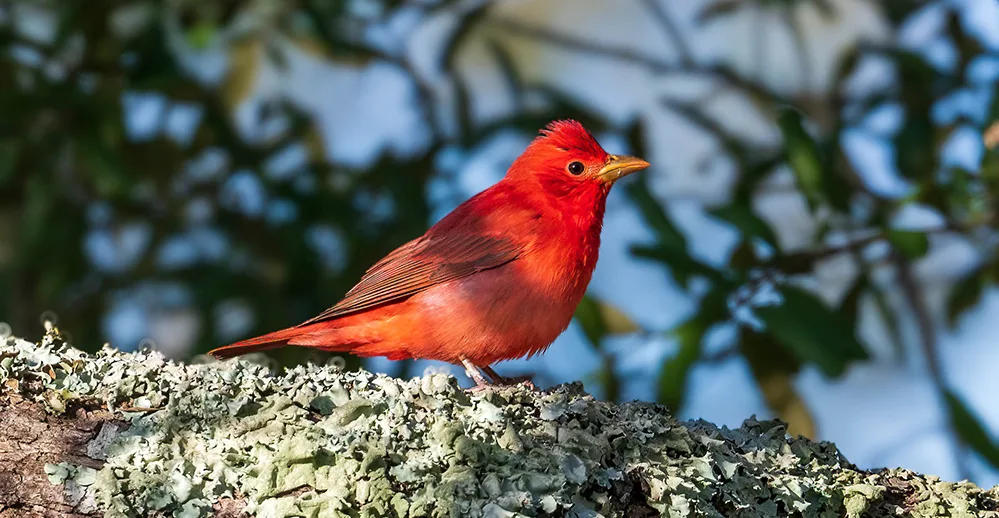
Note what you see and hear
The Cornell Lab of Ornithology recommends you pay attention to size and shape, color patterns, and bird behavior in its habitat. For example, is the beak long or short? What is the wing shape in flight? These features enable you to identify the species.
The Merlin Bird ID app is free and provides a fantastic resource for bird identification. One outstanding feature is that it detects birds in the area by sound and provides possible matches.
Merlin Bird ID simplifies visual identification if you don’t hear a bird call. For example, a small green bird stopped to sample nectar from my flowerpots this morning. Merlin produced a possible list of birds by entering the date and location, selecting the size from a picture menu, and selecting the bird’s activity from a list. Merlin identified my morning visitor as a Ruby-throated Hummingbird.
Watch at the right time of day and avoid windy weather
Early mornings and late afternoons are the best times for birding. Windy and bad weather often cause birds to seek shelter, making them harder to spot.
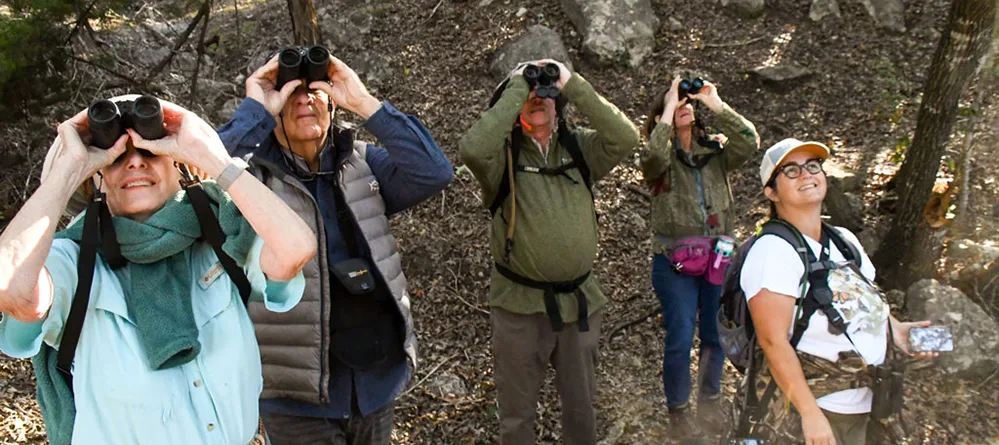
Get the optimal gear
Binoculars are an essential tool for birding. Nearly everyone recommends investing in a quality pair, which will pay off in the long run—an 8 to 10x magnification suits most birders. The objective lens diameter, typically 30, 40, or 50 mm, allows light to enter, creating a bright image. Consider the weight of the binoculars, as you might wear them for many hours.
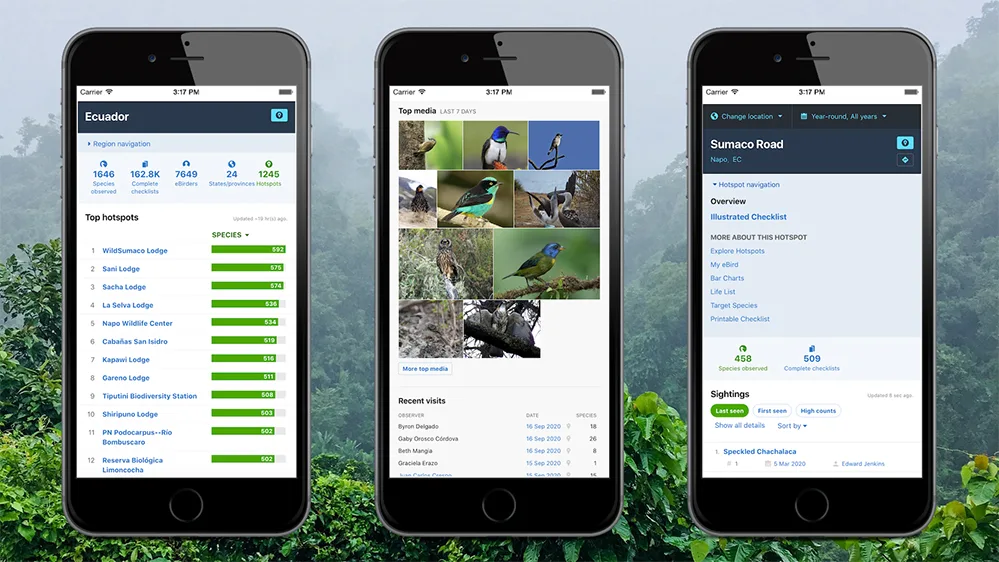
Keep a list
Many birders maintain a list of birds they have seen. I use eBird, an app for tracking and quantifying the species. The eBird community also helps identify birding hot spots and provides information about each species.
Take advantage of events and experts
Wildlife refuges often have a visitor center with a knowledgeable naturalist who can answer questions and point to active birding spots. Some locations also offer the ability to spot birds and wildlife from the visitor center itself.
The National Audubon Society or the American Birding Association identifies local groups that hold educational events or tours. Search for birding in Meetup and find a local birding group.
I’ve also learned much about birding by hiring guides or attending a birding festival, which is particularly useful and fun when visiting a new area.





